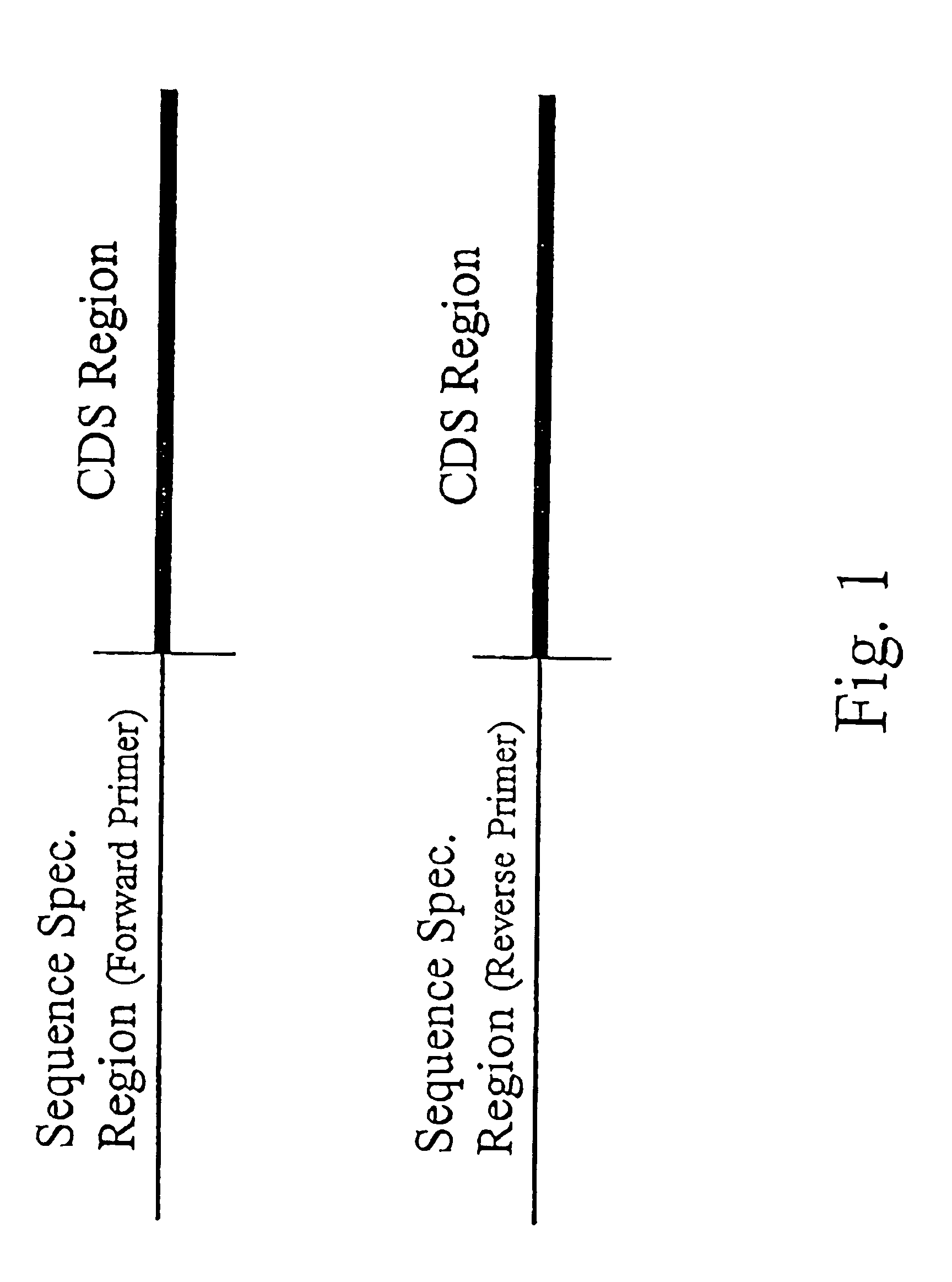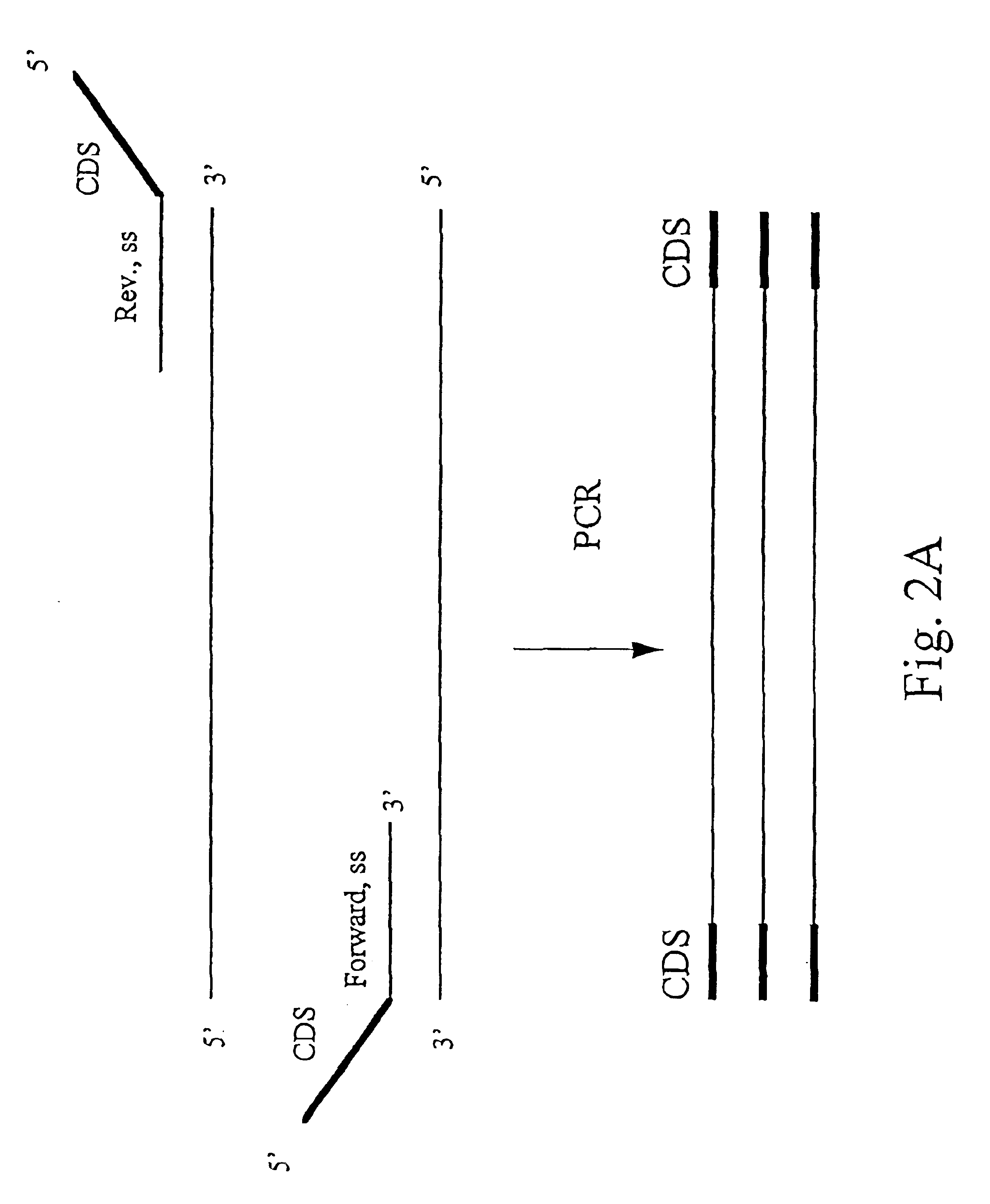Methods for detecting contamination in molecular diagnostics using PCR
a technology of molecular diagnostics and detection methods, applied in biochemistry apparatus and processes, organic chemistry, sugar derivatives, etc., can solve the problems of amplicon production and sample contamination, and achieve the effect of reducing the sensitivity of assays
- Summary
- Abstract
- Description
- Claims
- Application Information
AI Technical Summary
Benefits of technology
Problems solved by technology
Method used
Image
Examples
example 1
[0029]Stool sample is collected and prepared as described in U.S. Pat. No. 5,741,650 and in copending applications Ser. No. 08 / 876,638, filed Jun. 16, 1997, both incorporated by reference herein. Specifically, stool is collected and prepared so that a sample contains at least a cross-sectional portion of a stool voided by a patient. Alternatively, whole stool may be used. The sample is homogenized in a physiologically compatible buffer (e.g., having a final concentration: 500 mM Tris, 16 mM EDTA and 10 mM NaCl, pH 9.0), using an Exactor II shaker for 15 minutes. A 20% SDS solution is added to a final concentration of 0.5%. Proteinase K is also added to a final concentration of 500 μg / ml and incubated at 37° C.
[0030]For exemplification, sequence-specific primers suitable for PCR are chosen to correspond to a portion of the kras gene sequence. These are: Primer 1 (SEQ. ID. NO. 2): 5′-GATTCCTACA GGAAGCAAGTAGTAATTG-3′, and Primer 2 (SEQ. ID. NO. 3): 5′-TAATGGTGAATATCTTCAAATGATTTAG-3′.
[0...
PUM
| Property | Measurement | Unit |
|---|---|---|
| concentration | aaaaa | aaaaa |
| pH | aaaaa | aaaaa |
| heterogeneous population | aaaaa | aaaaa |
Abstract
Description
Claims
Application Information
 Login to View More
Login to View More - R&D
- Intellectual Property
- Life Sciences
- Materials
- Tech Scout
- Unparalleled Data Quality
- Higher Quality Content
- 60% Fewer Hallucinations
Browse by: Latest US Patents, China's latest patents, Technical Efficacy Thesaurus, Application Domain, Technology Topic, Popular Technical Reports.
© 2025 PatSnap. All rights reserved.Legal|Privacy policy|Modern Slavery Act Transparency Statement|Sitemap|About US| Contact US: help@patsnap.com



